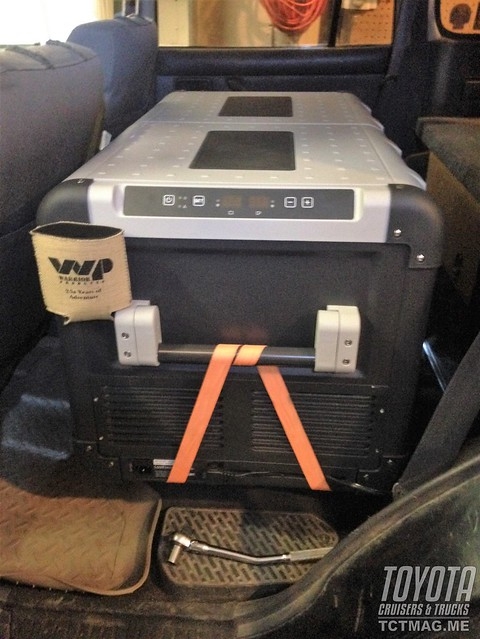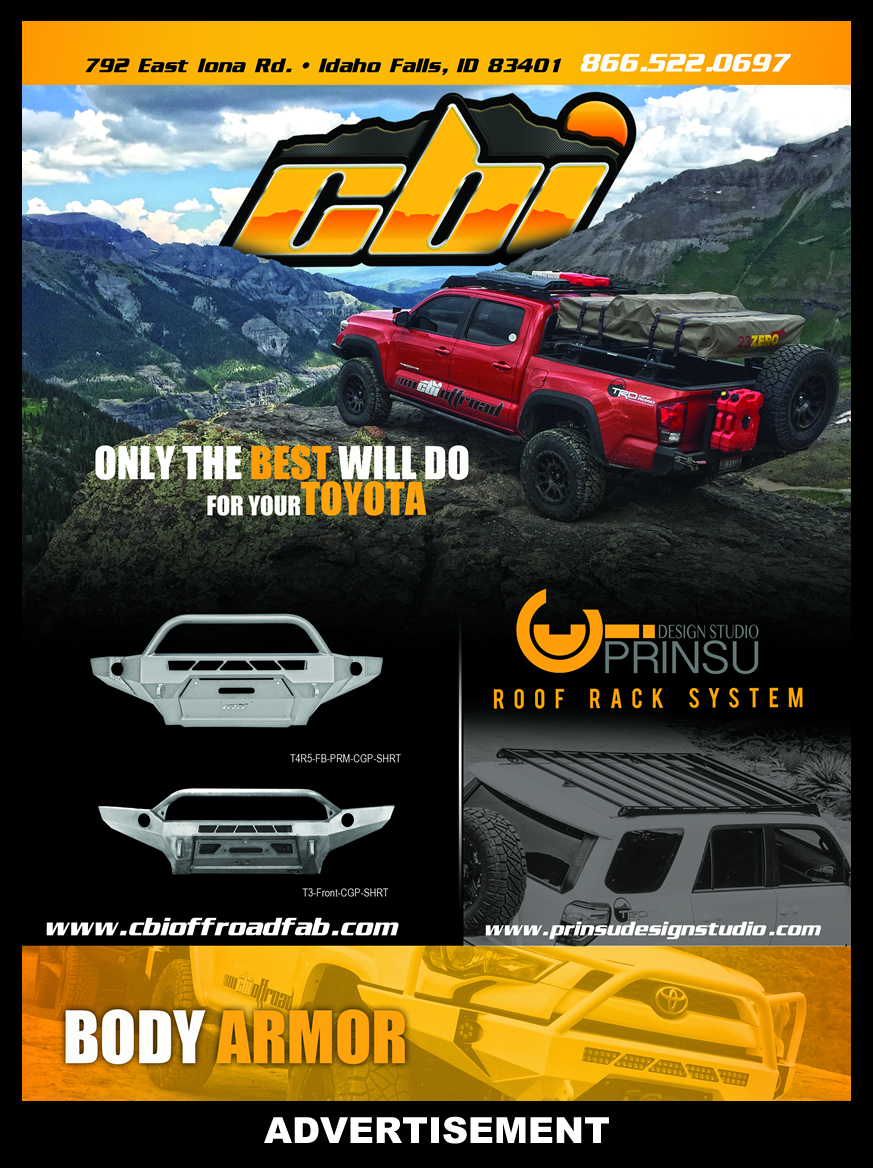This became a long-term review instead of simply measurements and specs from a combination of being busy, procrastinating, and needing to have it long enough to know exactly what to say. I do perfectionism right.This became a long-term review instead of simply measurements and specs from a combination of being busy, procrastinating, and needing to have it long enough to know exactly what to say. I do perfectionism right.
The payoff: I can talk about how it works in application and provide you with the best information I have.
I’m not a gear junkie. I buy gear I think I need. I typically covet an item for months or years before I buy. I have to be convinced it suits my needs. Maybe that’s why my 1993 Land Cruiser has been with me since 2001 and has 319,000 miles. I have been a mobile refrigeration user for many years. I have lent my fridge to friends and converted them. For the past two or three years I have been eyeing dual-zone options. I almost bought an earlier Dometic dual zone from good friend, Tim Nakari at Gamiviti, but I could not figure out how to fit that one in my drawer system (spoiler alert: I’ll tell you here how I solved that problem).
Food storage on the go was the domain of the “cooler.” Recall opening that fresh ice chest, and digging out your first ice-cold beverage at camp Friday night. Let the good times roll! We used cubed ice, maybe block ice, and for an “extreme” trip, perhaps dry ice. Still, mid-trip ice-runs were common. You had to plan each trip in to minimize open-lid time and “Don’t let the cold out!” was often heard. No way could you put warm leftovers in and expect them to get cold.
Inevitably time came on every trip where you’d reach into a lukewarm swamp and fish out a wet cheese sandwich or soggy lunch meat - unrecognizable with the label soaked off. Ready to go home? Grab a cold soda. Nope. It’s warm too. Sigh. And how can you forget what grew inside that time you forgot to clean it out when you got home. Gross!Legitimate portable refrigeration – distinguished by a compressor driven cooling system – has been around for decades. If you are on the road for extended periods of time, go to places where ice is hard to find, or simply avoid civilization while four-wheeling, it starts to make sense. Some view it as a luxury. Others don’t know it exists. With a refrigerator, your food stays fresh and dry. You can load barley pops in the morning and have what you need chilled by camp. But the outlook for that frozen burrito or steak or chicken was not so good. With a freezer, I contemplated safely frozen burritos, chicken, and steaks days into a trip, eliminating day-five smushed burritos at the bottom of the fridge. No rancid chicken juice leaking all over. Extra food at the end of the trip could go right back into the kitchen freezer. Having ice and making ice. When you have a single-compartment 12 fridge you don’t have to drink ice as you would with a cooler. I dreamed of ice cream.
Then we got to hit the road with a Dometic CFX75-DZW.
Out of the box I was blown away by the size; (see our unboxing video at https://youtu.be/BP4SjOkuqsY). I wasn’t sure this would fit in my truck. Even if you think, like I did, that it takes up too much space, now I know it’s not just about size.
Then there are the two completely separate compartments. Typically, one would use this as refrigerator in one and freezer in the other. They can each operate at temperatures down to -7. Each compartment has its own cooling element. You set the temperature for each independently. You choose whether to operate one or both compartments. For a shorter trip, I have left one section off and used it for dry goods storage.
You can put more things in the refrigerator than you might have otherwise. Before I might’ve just kept a loaf of bread in a box or a drawer. Now I can put that on top in the fridge. And when I truly don’t have enough to take up space, I’ll take a few clean shop rags, which I want to have some in the truck anyway, and put them on top to help keep things from knocking around.
Having a freezer opens up a world of possibilities. We now pack homemade lasagna servings frozen in foil (rather than foil and a plastic container or sealed plastic bag). We put a slab of frozen lasagna on the engine grill cooker each morning and it’s ready by lunch. No more soggy lasagna, risk of leaks, and transfer of containers. The same goes for just about any food you can think of.
The shallow freezer baskets can hang on the “fridge” side. This makes it possible to keep a top layer readily accessible. On the freezer side we like lifting out the basket for serving the ice cream we keep on top. Access is a huge amenity.
The lower freezer compartment fits an 8# bag of ice perfectly.
There are plenty of behind the scenes features designed for functionality:
• Handle tie down. I have been holding my fridge down with a ratchet strap through the handles for a year now. Works great. The handles were designed to take it.
• Lights. The interior LED lights are plenty bright and will flash a warning if you leave the lid open too long.
• USB outlet. A 500ma USB port allows for charging. No one ever bases a refrigerator purchase decision on a USB port but we had to ask Dometic why they included a “low powered” 500ma USB port. Dometic explained that this USB port was a legacy item and higher-output ports would be coming soon. Most newer devices like, or even need, 1,500ma or 2,000ma charging inputs. You can still charge a lot of devices on 500ma, just a lot slower. We have not used ours but now that I keep several magnetic rechargeable flashlights stuck to the side of the fridge, I just realized that it’s the perfect way to keep them topped off. The USB is powered any time the dual-zone has power – even when your fridge is turned off. Be aware of this if you leave your dual-zone connected when your truck sits between trips. I’m sure the drain is small, but I don’t know how much.
• The App. Seems like there is an app for everything and I expected this to be a gimmick. I don’t use it much, but when I do, it’s handy. At first I thought it would be a pain because it uses Wi-Fi. In practice, I don’t use Wi-Fi on the road so it’s not in the way except that other apps will try to get to the internet through your dual-zone. Dometic has not added internet yet. So it’s a simple matter of turning off your phone’s Wi-Fi as needed. To turn the Wi-Fi off on the dual-zone you have to use the keypad on the fridge, but it’s easy to do. With the app I can check voltage at the fridge (where it matters!), check temperatures, adjust temperatures, turn a compartment on or off. The adjustment feature makes it easy to apply one of the overlander’s best battery management tricks: lower your temps during the day when you are driving and power is ample and then turn them up a bit for the overnight and your fridge/freezer will draw less off your idle battery. Like the USB port, Wi-Fi has the potential to draw power after you switch off the fridge.
• Battery management. Like other high-end compressor driven fridges, the CFX75 is efficient and has three levels of built in selectable voltage cut-offs.
• Intake/exhaust side by side. Here is something I have to question. Without a doubt placing the venting at one end simplifies a host of installation issues. I can’t help but feel the intake and exhaust should be better separated. I have contemplated making my own exterior divider of some sort, but in practice, it has been a non-issue! I have kept the dual-zone lengthwise where the backseats would have been with the vents facing the door. I can tightly pack three sides and leave several inches of free space at that vented end of the dual-zone. If you install yours in a rear slide (the most common setup), you need zero inches clearance at the sides and interior end. Leave a few inches by your tailgate or rear door and all is good.
• Redundancy. A little known and barely publicized feature (though plainly described in the instruction manual) is an emergency override/bypass switch for the thermostat. Dometic was not eager to discuss this feature. After all, why install a bypass if you trust your electronics? Well, because “stuff” happens and it’s great to have options! The switch will put the compressor into full-run mode and you’d have to manually regulate temperature. I’ll likely never need it, and I applaud them for including it.
• Calibration. While you should never need it, there is a sub-menu available from the display to calibrate the temperature.
• Accessories. A slide and insulated cover are available. I did not install either but I have laid hands and eyes on both. Custom made for this fridge, the size of each minimizes wasted space, and all openings line up just where you’d want them. Plug and play.
• Removable swappable lids. Lids remove easily for cleaning or open storage and hinging can be swapped to customize your installation.
• Lid heat reduced condensation. There is a heating element embedded somewhere around the lid edge to reduce condensation. You don’t notice when you have no condensation also I have not given this much thought, nor have I seen much condensation. I also happen to be in a low-humidity climate.
• Cord management. Power cords and all controls at one end. If your dual-zone is static, the location of the cords doesn’t really matter. You will route them and forget it. If the dual-zone is on slides, it also won’t matter because you are going to install an outlet in a location where the cords are long enough to reach. Where the business end connection shines is plugging in to house current at home. I use the 120V cord and put the freezer/fridge on AC current in the garage and leave frozen food for the next week. It’s easy to get the benefit of the full cord length. Maybe it will reach directly to a wall outlet. Maybe like I do, you’ll leave a dedicated extension cord plugged in. Much like the vents (which are just above the power connections) the chief benefit is you can pretty much ignore the other three sides and deal with one end of the dual-zone.A few more things I have figured out:
• An 8 pound bag of ice fits perfectly in the bottom of the freezer section.
• The half-height wire tray designed for the freezer also fits in the refrigerator and serves to be an easy way to take the top layer off and not crush your bottom layer.
• I have to remember to turn Wi-Fi off on my phone when I have Wi-Fi enabled on the fridge or my phone tries to access the Internet through the refrigerator. The refrigerator does not have its own Internet.
How the CFX 75DZW changed me.
The CFX 75DZW would not fit existing drawers in my Land Cruiser. I was not yet ready to take the plunge and rebuild my entire drawer system that has served me for 14+ years. The only place for the Dual-Zone would be the back seat area. I usually removed my backseats for any moderately long trip. I had a car (now a 2006 Land Cruiser) for my daily driver. Out came the seats. A few ratchet straps later the fridge was secured. How it changed me: I (and my girlfriend) love being able to reach behind me for a cold water or snack on the road. No longer do we have to plan what snacks we want while at a rest stop. No longer does the cheese or guacamole sit out any longer than needed.An obvious drawback is you cannot put too much gear on top. Fortunately, the back of an 80 is plenty large for two people’s gear and the CFX 75DZ is the perfect height and place for a 20 lb dog and his bed. Mikey has learned that he snacks when his humans snack and gladly steps aside.
Conclusion
In June 2019, I was on a several day trip in a remote area of Utah, 90°+ daytime heat. Going into this trip I knew my air-conditioning wasn’t working. I packed plenty of water and appropriate clothing. I didn’t know was that two of the dogs traveling with us would decide to go on a 2 1/2 day walk-about and we’d spend 14 hours the first day tracking paw prints over sand and rock. Rotating water bottles into the freezer I was able to chill them faster and have frozen bottles to put against my skin. During this time, I also found out that when not driving and in this high heat I couldn’t quite get the freezer all the way down to four or five below as it would so easily sitting in my garage plugged into the wall. But over the course of a few hours water didn’t freeze and ice cream stayed frozen, so I can’t ask for more than that.
At a Glance
The Dual Zone (DZ) CFX line is available in two sizes 75 and 95.
Dimensions: 18.6"H x 34.9"W x 19.5"D
Weight: 68 lbs
https://www.dometic.com/en-us/us/products/food-and-beverage/coolers/electric-coolers/dometic-cfx-75dzw-_-139576#specifications
[flickr set=72157711521438392]
To get your copy of the
Summer 2019 Issue:
Follow us on Facebook, Twitter, and Instagram to get up-to-date industry news, events, and of course, amazing adventures, stories, and photos!













